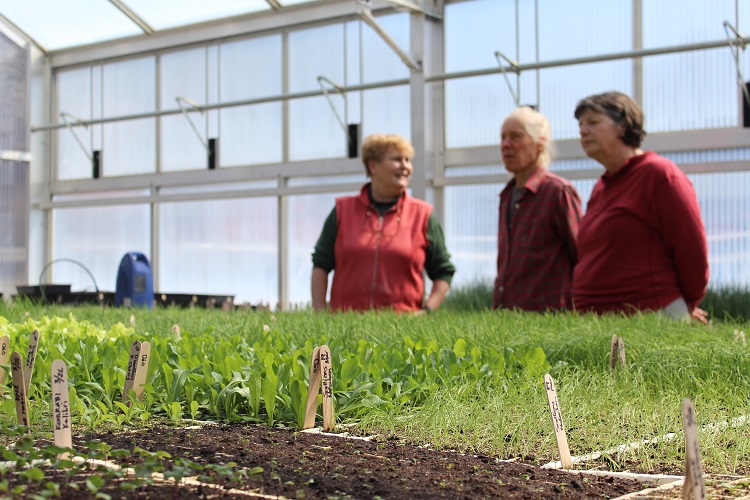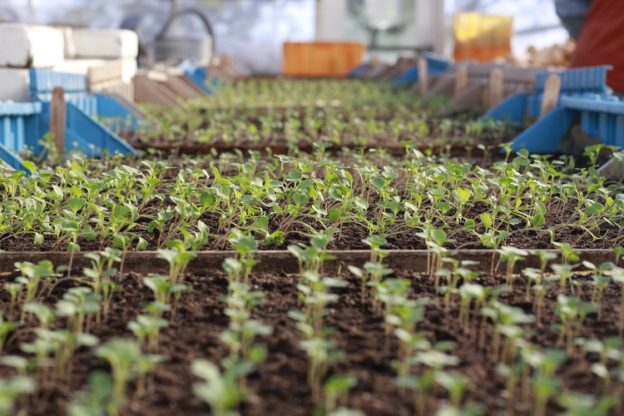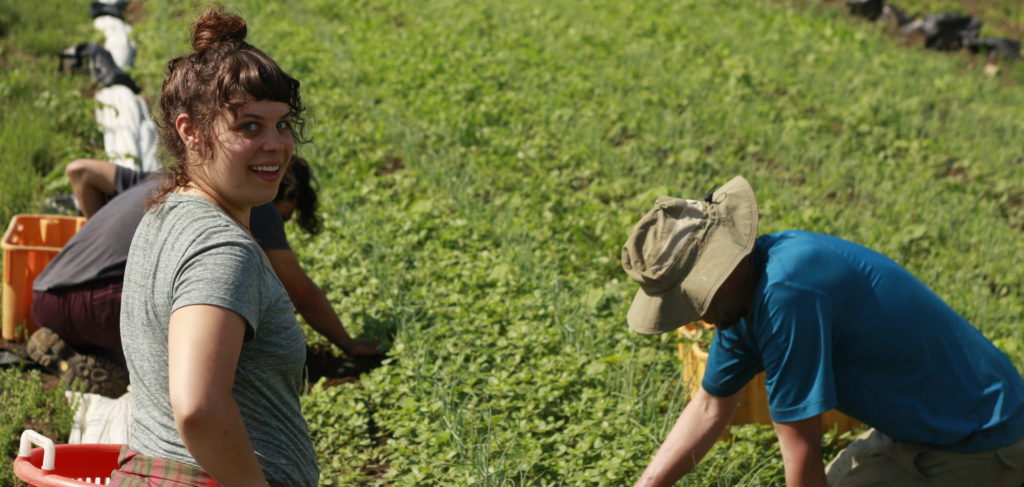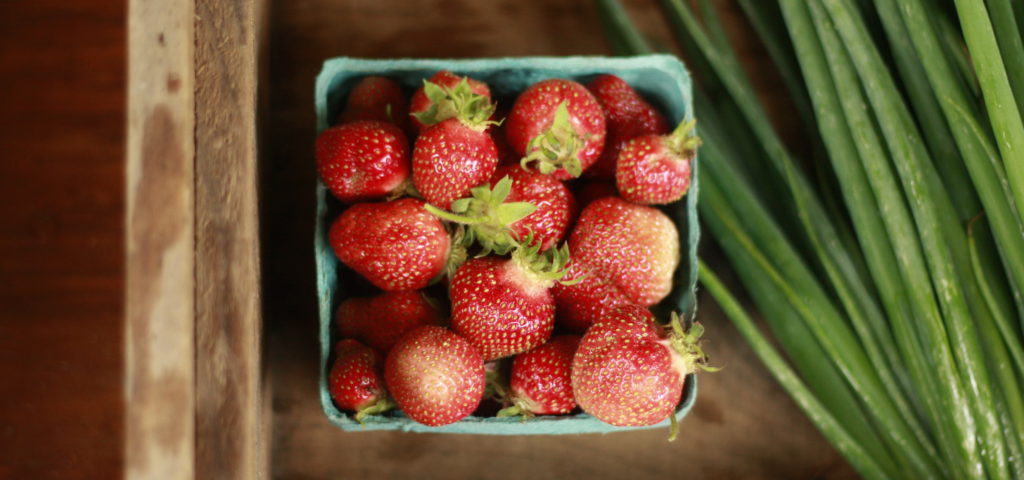After a long winter, it’s time to get back in the field, with thousands of plantings and a few new additions!

Amazingly, April brought us 6.5 inches of rain, falling over 20 of its 30 cloudy days, with an average temperature of 52 degrees. It’s been challenging just moving around the sodden fields and working with the saturated soil. We’re identifying with the turtle, working within our shells of layered shirts and sweaters, all wrapped-up in our mud-covered rain gear; turtling along, we seeded the first greens and carrots of the season on March 28 and have been seeding and transplanting every week since. We’ve harvested over-wintered spinach for Henrietta’s Table in Cambridge, and greens and radish for our first delivery of the season to the Cambridge and Somerville schools.
Despite limitations of weather, all spring planting projects are on schedule thanks to the dedicated work of this year’s Crops Team. During the week of April 15, we pulled back the straw and weeded the half-acre of strawberries we’ll be picking this summer season, then planted 4,000 new strawberry plants for next year’s harvest.

Do you know the natural indicator to plant potatoes? In early April, 2,500 pounds of potatoes arrived from Maine. We hauled them into the barn loft and arranged them on trays in front of the windows for green-sprouting. By the last week of April, they had sprouted leaves. We cut up the largest potatoes to multiply the seed and planted them on May 1, just a few days after we noticed the first blooming dandelions of the season—our signal to plant.
We were thrilled to learn of the town’s approval for our plan to construct a hoop house
by Boyce Field to provide year-round, protected growing space. The potential for increased program offerings and more veggie sales with the help of the structure will be a boon to the farm. Thanks to our staff and our neighbors for working together to identify a suitable location for the structure; construction is scheduled to begin at the end of the month.

By the end of last week had about 40% of the onion crops (24,000 plants!) in the ground–only 33,000 plants to go! Thanks to volunteers Anne, Sheila, Francesca, Sandra, and Anna for seeding the majority of what’s in the greenhouse—especially those onions, where they do not scatter seed, but rather place one seed at a time through a grid, 650 seeds per tray, 88 trays–57,200 plants! We’ve also been using volunteer Fred’s new cold frame to harden-off those onions before moving them to the field. Fred’s design is sturdier than previous iterations and the shed roof design allows us to roll and perch the plastic on the high end, simplifying the process of covering and uncovering the plants on cold or rainy nights—of which there have been too many!
But with a little sun and warmth, by next week we should have lots of greens to harvest for the first CSA distribution on 5/15 and the first Union Square Farmers’ Market in Somerville on 5/18.
If you haven’t secured your spot in the spring CSA, there’s still time, and we have a few slots still open. If you’re looking to learn more about farm-to-table practices and cooking, we have upcoming programs for adults, teens, and families, where you can get hands-on in the field and kitchen!





